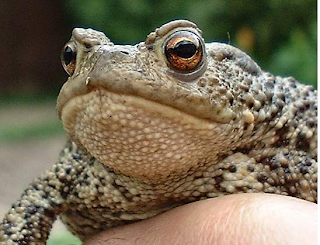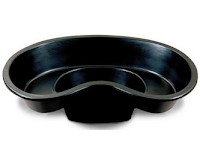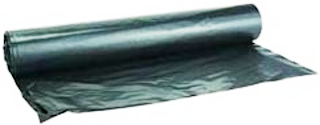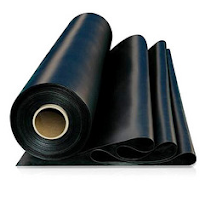In this post, we will be focusing on water. Drinking is just as much a part of eating as nomming (my word for stuffing your face). My garden is extremely small, so there is no space for a pond. But who cares? A pond is better, attracting a wider range of wildlife, plus you can grow plants in it, but a bird-bath would do as well. You can buy loads of different types of bird-baths from loads of suppliers. The RSPB sells a wide range of bird-baths from the Anywhere Bath which is for use on a pole, the ground or hung from chains, to the attractive Terracotta Hanging Cone Bath which is quite small and not winter hardy (see Product Reviews on the
RSPB website), to the fantastic Echoes Ceramic bird-bath.
 |
| RSPB Echoes Ceramic bird-bath |
All are suitable for birds ranging from the tiny Blue Titmouse to our largest dove the Wood Pigeon, although the Terracotta Hanging Cone Bath and the Anywhere Bath if hung will not support a Raven or bigger (in fact you can't get bigger. The Raven is the largest passerine, or perching bird, that is with feet modified to grip a branch or other perch). In winter be prepared to go out every early morning and break the ice. Remember, if your bird-bath is terracotta, even if it is classed as "frost-proof", bring it inside, and always have a back-up ice-hardy bath ready to put out. If your ice-hardy bath is out, but you don't like breaking the ice every day (or it is so cold it freezes solid all the way through) earlier in the year, put a small aquarium-heater in the water with the thermostat as low as possible. You don't want the birds to burn their tootsies to get chilblains (I don't know if birds can even get them) do you? There is no point covering up the bird-bath at night to stop it frosting over, because there may be owls or even a Nightjar or if you're really lucky, a Nightingale or Thrush Nightingale (for European peepz) stopping to drink in the dark. Cleaning your bird-baths is vital. Birds are prone to many infections and diseases and stagnant water is the perfect place for bacteria to breed. ARK-KLENS Veterinary Disinfectant (also available from the RSPB) is perfect for cleaning bird-baths, bird-tables (only if they have a tray), bird-feeders, and food-hoppers. Just spray on, leave for a minute and wipe off. Simples. (By the way I am NOT a meerkat) ARK-KLENS is completely safe for all animals, wild or domestic. The good thing about bird-baths is that even if you live in a high-rise flat with just a balcony, you can still give birds a bath! Once, and it is extremely unlikely, a damselfly urgently needing somewhere to lay her eggs, laid them in my bird-bath! Only one hatched into a nymph and because there was nothing to hunt in the bird-bath, was going to die soon. I felt I just had to help it. It's mother looked so healthy, it would be a shame not to pass on her genes. So I did some pond-dipping at Leigh Park Gardens. I caught several toad-tadpoles (I like to call them "toadpoles"), a dragonfly nymph (liked it, kept it), a "newtpole" (newt-tadpole), some frog-tadpoles, a Great Diving Beetle (I put it back), and some Whirligigs. I found a bucket and put them into it. When I got home, I found a bigger tub and tipped all of them into it. I added the damselfly nymph (fortunately the two nymphs didn't kill each other) and they started hunting. I kept the prey topped up and they both moulted their final skin into adults. Ahh the joy of raising an "insect-of-prey"!

|
| The Damselfly Nymph |
 |
| The Damselfly Emerges! She was a Large Red female. |
 |
| The Dragonfly Emerges! He was a Southern Hawker male. (He is pale because he has only just moulted) |
That's it for baths. Onto ponds. Even a tub of water can attract pond-life. I tried it once. A family of Common Toads lived there and so did some mayflies.
 |
| Common Toad female |
 |
| Pre-formed Liner (not suitable for a wildlife pond) |
First, you must make a pond. You can buy ready-formed pond-liners at garden centres but these are generally not suitable for birding ponds as they rarely have a shallow shelf around the edge, plus, it is difficult to cover up the edges and marginal plants cannot grow there. You also can't choose exactly the size and shape you want the pond. The most highly-used liner is black plastic sheeting. This is fine, but it is better to use butyl rubber. It is stronger and thicker, plus it doesn't make that loud crinkly-rattly noise that wee birdies' ears are so sensitive to. Dig a hole the size and shape (a random curvy shape is way better than formal angles and remember to leave a shelf that is at least 30cm wide and no more than 6cm deep) of the pond-to-be. Remove every stone of rock or anything else sharp and if it leaves a big hole/dent in the ground, fill it in with soil that you dug. Go to your local pond or lake and get a few buckets full of pond-water. Take them home. If there is algae on it or insects or even a Minnow in it, keep them for your own pond. Just make sure they have food until you are ready to put them in your pond. Remove Duckweed or Frogbit though, because they will take over and block out light. Line the dug-out hole with old newspapers, many layers, at least four. Double-check there are no spiky stones poking out then roll out the butyl rubber across the hole. Push it down into the hole to line it, pushing it up against the angle of the shelf. A pond-making tip: dig about three small tunnels, one in the bottom of the pit, one in the side (not above the shelf) and one in the side (above the shelf). When you have lined the pond, locate your tunnels underneath the butyl rubber then, using a Stanley Knife, cut out holes in the butyl rubber so your tunnels can be accessed. Creatures will hide in these later on. Put rocks or logs (leaving a space for access) around the pond to hold the butyl rubber in place. Lay the garden hose into the lined hole. Turn it on full-blast to get the job done quick. Leave it to stand for about an hour before adding your buckets of established pond-water. Go pond-dipping at the local pond to catch lots of insects and tadpoles to start off your pond. Add them in, making sure there is plankton in there. You will see the larger shrimp larvae and other zooplankton (planktonic animals) if there is any. This must mean phytoplankton are present too, as zooplankton feed on phytoplankton. Now, there is one thing missing. Oxygenators. You may think an aquarium oxygenator would do, but plants are far better at this job. Buy special aquatic plant baskets. Use plastic sheeting or leftover butyl rubber to line them. Using Sphagnum Moss damages the marshes and bogs of Wales where it comes from. Always use native wild species, not even varieties of

|
Pre-formed Liner (Again) This one has a
shallow shelf but not shallow or wide enough. |
 |
| Plastic Sheeting |
 |
| Another pre-formed liner with crappy shelf |
 |
Butyl Rubber
|
wild plants. These attract far more creatures to the garden. Provide a boggy patch of clayey mud for House Martins to build their nests from. Also, this will be rich in earthworms, great nutritious food for Blackbirds, Robins, Great Titmice and many other birds. You may even attract a Common Snipe (the Jack and Great Snipe are much rarer, but in some areas they may turn up). Woodcock (I wonder why they don't call the hens Woodhens) may also come to wade and pull up pond-snails (I doubt a Woodcock would be able to tackle a Great Pond-snail). Pond tip 2: no pond is a good pond without waterlilies, The White Waterlily is the most stunning of them all. Plant maybe one plant of this. Yellow Waterlily or Brandy-bottle is also very pretty. Least Waterlily is like a miniature Yellow Waterlily. Fringed Waterlily is tiny, and related to Bogbean. It also has yellow blooms. Plant irises on the shelf, Stinking Iris, a purple/white/yellow species is a beautiful plant in my opinion. Its berries are perfect bird-food too. It is rather small though. Its cousin the Yellow Flag is a lot bigger, with bright yellow flowers. It does not have berriesw, but attracts numerous insects. Sweet Flag is native to Mainland Europe but is naturalised in Britain. Its berries will not ripen in Britain however. It was not introduced by Man, but by birds, so use it! It has very small flowers in a huge spike. When not in flower it is very inconspicuous. Put up a hide near the pond. Keep watching the birds! Your pond will soon be thriving!
PS sorry I have not posted for AGES because the PC was being a TOTAL GIT.
 |
| Lets have a nice blue Epic Face this time. |










No comments:
Post a Comment